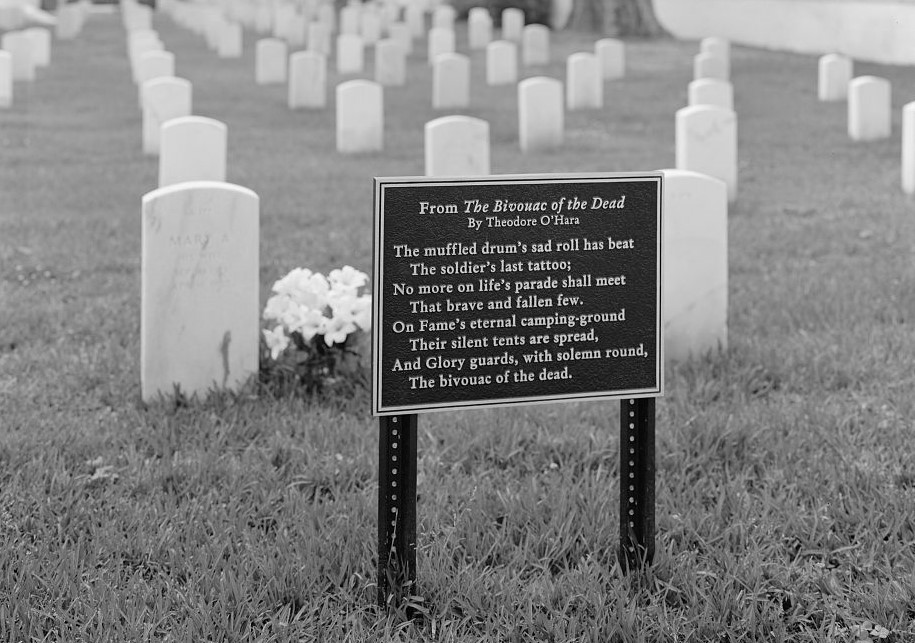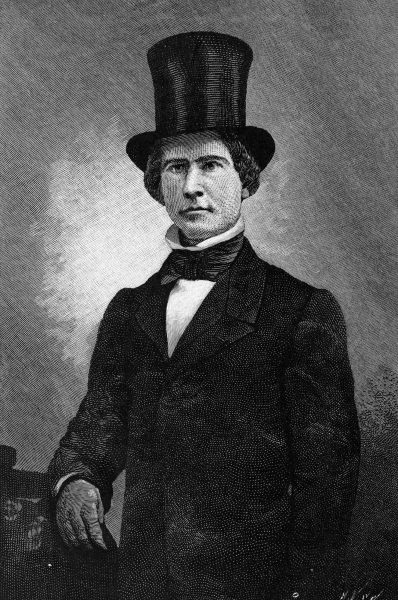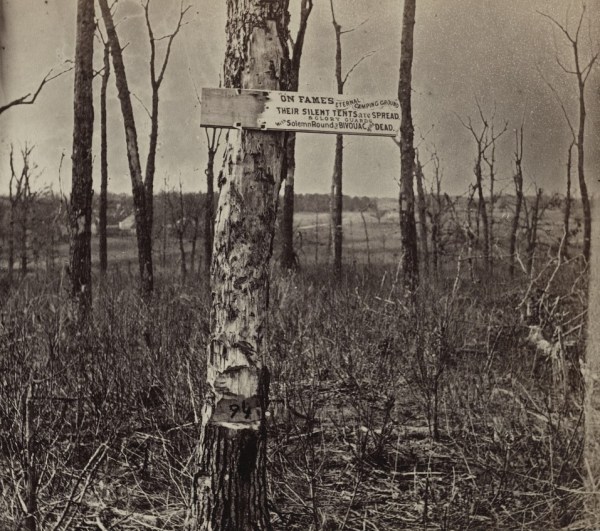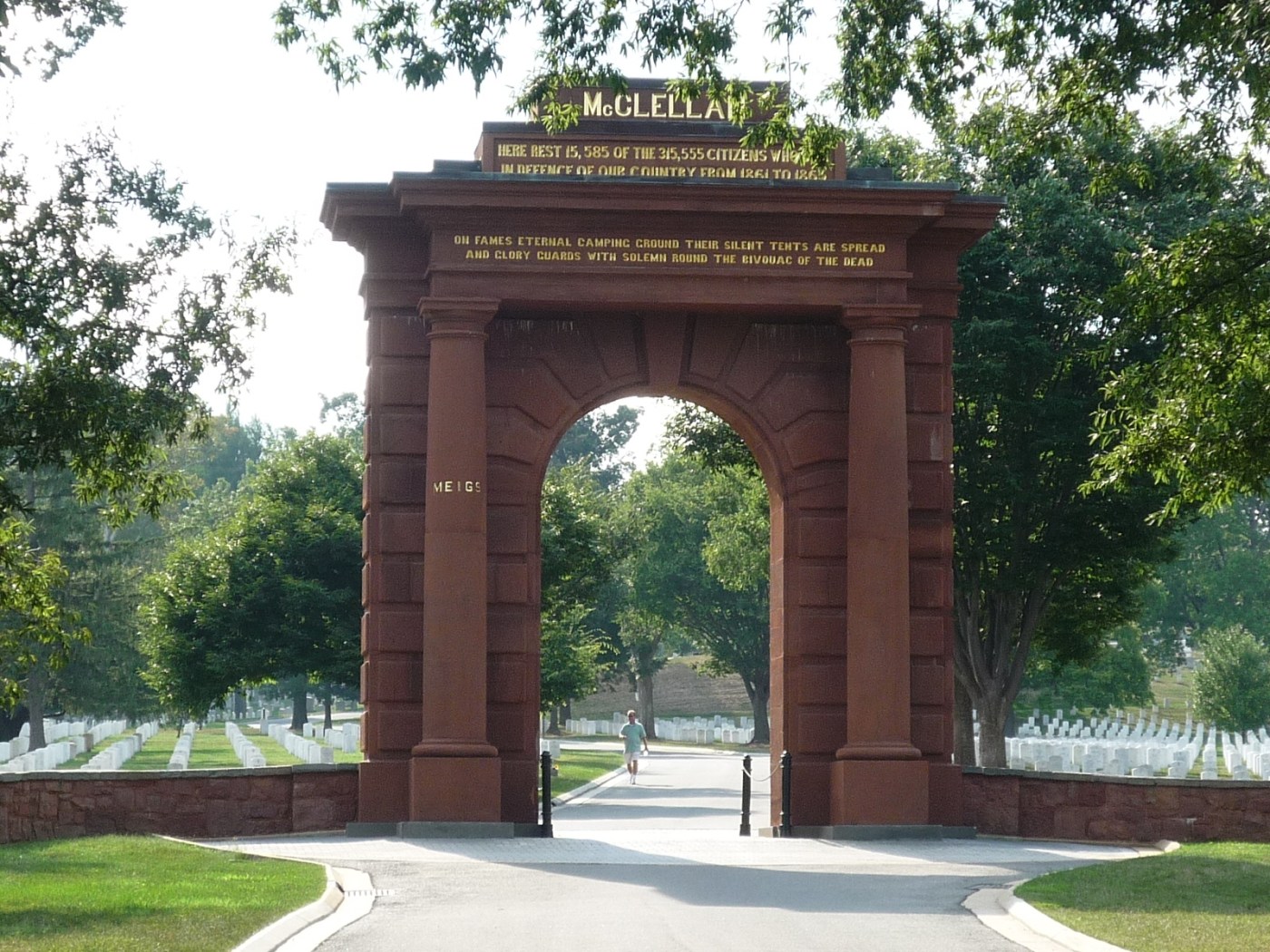
The mounted plaque stands in front of the headstones at Mobile National Cemetery in Alabama. The dark, cast-aluminum tablet draws a stark contrast to the sea of pearly marble beyond. Across its face in white lettering runs the sorrowful first stanza of Theodore O’Hara’s elegiac poem, “Bivouac of the Dead,” beginning with the verse “The muffled drum’s sad roll has beat / The Soldier’s last tattoo; / No more on life’s parade shall meet / That brave and fallen few.”
Tablets bearing passages from O’Hara’s poem can be found in dozens of VA national cemeteries across the country. Originally written to honor the Kentucky volunteers who died in the Mexican War (1846-48), the poem now serves as a literary memorial to all lives lost in service to the nation.

Born in Danville, Kentucky, in 1820, Theodore O’Hara studied law as a young man and secured a position in the U.S. Treasury in 1845. However, the allure of soldiering was too strong for him. When the United States declared war on Mexico in 1846, he left his desk job and obtained a commission as a captain in the U.S. Army. He was promoted to brevet major for his gallant conduct in the campaign that led to the fall of the Mexican capital in 1847.
A few years later, O’Hara took command of a contingent of Kentucky men who were veterans of the Mexican conflict and joined the extra-legal 1850-51 filibustering expedition to Cuba that sought to overthrow Spanish colonial rule on the island. The venture failed and he was wounded in a skirmish. Returning to Kentucky, he settled into work as a journalist. He took up arms once again at the start of the Civil War, joining the Confederate Army at the rank of colonel.
O’Hara saw action in several major battles and survived the war, but he succumbed to typhoid fever in 1867 at the age of 47. Buried in Columbus, Georgia, he was subsequently reinterred in the state cemetery in Frankfort, Kentucky, in 1874 at the behest of the Kentucky legislature.
O’Hara was a man of letters and in the 1850s he enjoyed considerable success as a writer and editor at several major newspapers. But he also dabbled in poetry and his literary reputation rests largely on “Bivouac of the Dead” and another poem he authored, a tribute to “The Old Pioneer, Daniel Boone.” He wrote “Bivouac” of the Dead” to eulogize the many Kentucky soldiers who perished while fighting off a much larger Mexican force at the Battle of Buena Vista in February 1847.
In 1850, the Kentucky legislature built a memorial to the fallen men at the cemetery in Frankfort, where many of them were buried after their remains were returned from Mexico. O’Hara’s poem was published the same year in the newspaper he was editing, The Franklin Yeoman. The final stanza references the newly raised monument and the men interred beneath: “Yon marble minstrel’s voiceless stone / In deathless song shall tell, / When many a vanquished ago has flown, / The story how ye fell; / Nor wreck, nor change, nor winter’s blight, / Nor Time’s remorseless doom, / Shall dim one ray of glory’s light / That gilds your deathless tomb.”

“Bivouac of the Dead” was reprinted several times in other newspapers prior to the Civil War. However, its popularity did not really take off until after the war when it was widely anthologized in literary publications such as Littell’s Living Age (1866) and Library of Poetry and Song (1871).
In an 1874 booklet that included both O’Hara poems, Kentucky historian George Ranck lauded him as the nation’s “one elegiac poet of acknowledged genius.” Another Kentucky native and author, Susan B. Dixon, writing in the New York Times at the turn of the century, extolled “Bivouac of the Dead” in equally rapturous language: “It stands out alone, perfect in its beauty, its grandeur, its harmony, its sublime pathos, its exquisite and mournful tenderness, its glory of immortal light. It is in words what the great “Siegfried” funeral march is in music.”
Besides appearing frequently in print, “Bivouac of the Dead” also started turning up in cemeteries for the war dead after 1865. Lines from the poem were displayed on painted signboards at the gates and along the paths winding through the grounds. The massive archway called the McClellan gate that served as the original entrance to Arlington National Cemetery featured verses on both sides of the memorial. In the 1880s, the Army manufactured a set of seven cast-iron tablets inscribed with passages from the poem to replace the makeshift markers at the national cemeteries in its care. O’Hara’s name, however, was conspicuously absent from the plaques, most likely due to his service in the Confederate Army.

In the decades that followed, tablets disappeared or were removed from many cemeteries due to maintenance costs and possibly concerns about O’Hara’s connection to the Confederacy. By the 1990s, only 16 national cemeteries still had one or more tablets on display. The poem itself retained its appeal and it was frequently included in anthologies and poetry collections.
In 2001, VA’s Under Secretary for Memorial Affairs, Robin L. Higgins, decided to revive the tradition of installing the poetic tablets at national cemeteries. The following year, VA awarded a contract to mass produce more than 100 cast-aluminum plaques inscribed with the first eight lines of the poem. Unlike the earlier tablets, these also included the title of the poem and, most importantly, Theodore O’Hara’s name. The plaques have been put in place at national cemeteries throughout the VA system, sharing O’Hara’s meditation on bravery and sacrifice with a new generation of visitors.
The poem in its entirety is available at this link.
By Emme Richards
Virtual Student Federal Service Intern, VA History Office, Department of Veterans Affairs
Share this story
Related Stories

History of VA in 100 Objects
Object 96: Postcard of Veterans Vocational School
In 1918, the government created the first nationwide vocational training system to help disabled Veterans acquire new occupational skills and find meaningful work. Over the next 10 years, more than 100,000 Veterans completed training programs in every field from agriculture and manufacturing to business and photography.

History of VA in 100 Objects
Object 95: 1840 Census of Pensioners
In a first, the 1840 census collected data on Veterans and widows receiving a pension from the federal government. The government published its findings in a stand-alone volume titled “A Census of Pensioners for Revolutionary or Military Services.”

History of VA in 100 Objects
Object 94: Southern Branch of the National Home
The Southern Branch of the National Home for Disabled Volunteer Soldiers opened in Hampton, Virginia, in late 1870. The circumstances surrounding the purchase of the property, however, prompted an investigation into the first president of the National Home’s Board of Managers, Benjamin Butler.


